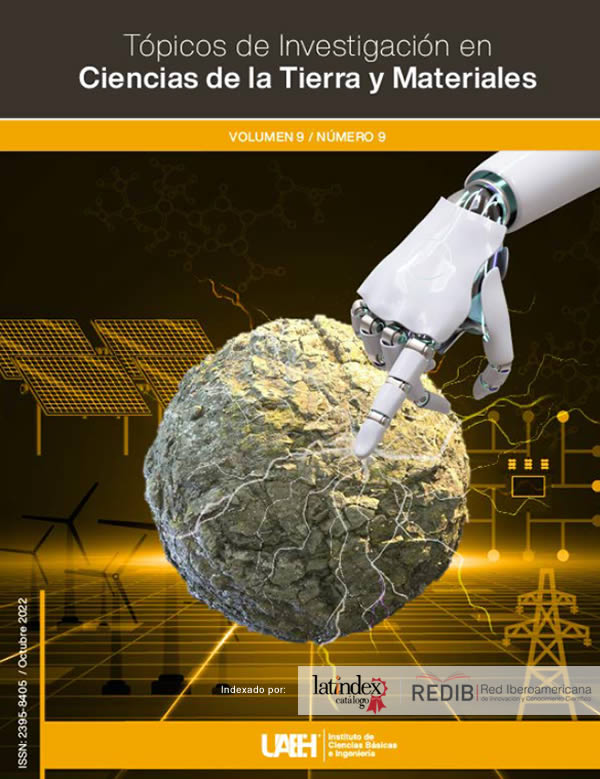Addition of organic ligands to improve the dissolution of copper from chalcopyrite in the aqueous medium of sulfuric acid-hydrogen peroxide-ethylene glycol
Abstract
It has been found that the addition of ethylene glycol (EG) in a sulfuric acid-hydrogen peroxide leaching solution potentiates the dissolution of copper from chalcopyrite, however, at low (0.007M) concentration of sulfuric acid the Fenton reactions and Fenton type promote the rapid decomposition of hydrogen peroxide, which on the one hand limits the dissolution of copper and, on the other hand, mineralizes ethylene glycol. To avoid this problem, in this work the EG is replaced by organic ligands (EDTA or citric acid). The results showed that EDTA is the best organic ligand to improve the dissolution of chalcopyrite because it helps to further retard the decomposition of hydrogen peroxide and presents a mineralization of around 4%, while oxalic acid is mineralized. approximately 16% and only improves the chalcopyrite dissolution process by 5% with respect to the 0.007M sulfuric acid-1M hydrogen peroxide solution.
Downloads
References
Koppenol, W. H., Butler, J., 1985. Energetics of interconversion reactions of oxyradicals. Advances in Free Radical Biology and Medicine. 1(1), 91-131.
Mahajan, V., Misra, M., Zhong, K., Fuerstenau, M. C., 2007. Enhanced leaching of copper from chalcopyrite in hydrogen peroxide–glycol system. Minerals Engineering. 20(7), 670-674.
Martell, A. E., Smith, R. M., Motekaitis, R. J., 2004. NIST standard reference database 46: NIST critically selected stability constants of metal complexes database (version 8.0 for windows). Texas A and M University, College Station, TX.
Michal, R., Sfaelou, S., Lianos, P., 2014. Photocatalysis for renewable energy production using PhotoFuelCells. Molecules, 19(12), 19732-19750.
Nicol, M. J., 2020. The role and use of hydrogen peroxide as an oxidant in the leaching of minerals. 1. acid solutions. Hydrometallurgy, 105328.
Ruiz-Sánchez, A., Lapidus, G. T., 2022a. A study to understand the role of ethylene glycol in the oxidative acid dissolution of chalcopyrite. Minerals Engineering, 180, 107502.
Ruiz-Sánchez, Á., Lapidus, G. T., 2017. Study of chalcopyrite leaching from a copper concentrate with hydrogen peroxide in aqueous ethylene glycol media. Hydrometallurgy. 169, 192-200.
Ruiz-Sánchez, A., Lapidus, G. T., 2022b. Electrochemical and leaching studies to better understand the role of ethylene glycol in the oxidative acid dissolution of chalcopyrite. Electrochimica Acta, 418, 140343.
Ruiz-Sánchez, A., Lázaro, I., Lapidus, G. T., 2020. Improvement effect of organic ligands on chalcopyrite leaching in the aqueous medium of sulfuric acid‑hydrogen peroxide-ethylene glycol. Hydrometallurgy, 193, 105293.
Solís-Marcial, O. J., Lapidus, G. T., 2014. Chalcopyrite leaching in alcoholic acid media. Hydrometallurgy, 147, 54-58.
Solís-Marcial, O. J., Lapidus, G. T., 2013. Improvement of chalcopyrite dissolution in acid media using polar organic solvents. Hydrometallurgy, 131, 120-126.
Copyright (c) 2022 Ángel Ruiz Sánchez, Gretchen L. Lapidus

This work is licensed under a Creative Commons Attribution-NonCommercial-NoDerivatives 4.0 International License.












